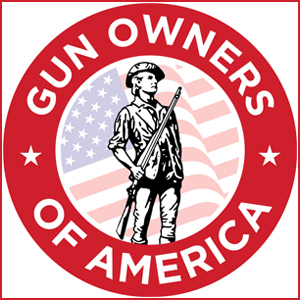Few rifles in operation during America’s “Wild West” days created such a long-term impact than the Winchester Model 1866 Carbine.
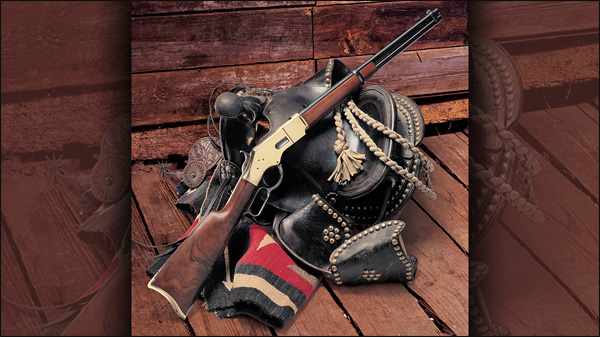
This weapon all but defined the era with its innovative, easy-to-use lever-action design and 15-round magazine capacity. The Western Frontier had a new player in town. One that revolutionized the rifle world and essentially became the innovative catalyst that started a long line of lever-action rifles throughout the West.
The Winchester Model 1866 Carbine
It’s without a doubt that this weapon saw a lot of action in its day, from settling disputes at long range to keeping predators away from livestock or taking down enemies with relative ease. The Winchester Carbine became synonymous with dishing out deadly rounds with optimal accuracy and lightning-fast discharge.
However, with this incredible weapon being ubiquitous throughout the West, both the Americans and their rivals, the Native Americans—both friendly factions and those still blood-hungry enemies against the white men—had the Winchester in their possession.
Unfortunately, one such event in our country’s complicated past placed the Winchester 1866 Carbine center stage as the go-to weapon. This was also the scene of one of the most brutal and bloody losses of life recorded in early American History—specifically, the Battle of Wounded Knee.

This battle, or massacre as it’s come to be described, prominently featured the Winchester on both sides of the field. It was a possible misunderstanding that started the violence and an ironic ending that all but saw the end of conflicts between the white men settling the West and Native Americans that opposed their advance.
History Of Production
Prior to the Winchester 1866 Carbine, there were similar lever-action repeating rifles created by several innovative production companies. Walter Hunt from New York patented the premier version under the name “Volition Repeating Rifle.”
This weapon would fire a round—dubbed the Rocket Ball by Hunt—that held gunpowder in its hollow base. However, his rifle was very unreliable and virtually unworkable. Soon after, Hunt’s patent was acquired by Lewis Jennings in 1849.
From Hunt’s initial ideas and design, Jennings created a rifle that offered better performance but with the same complicated mechanics as Hunt’s original rifle designs. Jenning’s version saw limited production until 1852.
In 1855, two men, Horace Smith and Daniel Wesson, formed the Volcanic Repeating Arms Company. With Jenning’s patent, the two entrepreneurs made several improvements to Jenning’s original design and created the Volcanic lever-action rifle. The largest stockholder of this newly formed company was a man named Oliver Winchester.
With a mixture of both success from their developments with ammunition and some not-so-satisfactory results from their Volcanic rifle, Smith and Wesson left the company to create their own business, the Smith & Wesson Revolver Company.
Just about a year after the two men’s departure, the Volcanic Repeating Arms Company moved locations and soon became insolvent. Winchester moved in to essentially pick up the pieces of the battered business. After purchasing the bankrupt business’s assets from his fellow investors in 1857, he reorganized the company into the New Haven Arms Company.
Perfecting the .44 Cartridge
Still with the company through all of its changes and reorganizations, Benjamin Henry worked with designs and innovative cartridge concepts created by Horace Smith to perfect a powerful .44 cartridge, coined the Henry cartridge. This, along with the redesign of the rifle to use this new ammunition, led to the Henry rifle.
It was used by a considerable number of Union soldiers during the Civil War. The Confederates, obviously overwhelmed by its rapid repeat action and large ammunition capacity, called the Henry rifle “that damned Yankee rifle that they load on Sunday and shoot all week!”
Once the Civil War ended, Winchester renamed his company to the Winchester Repeating Arms Company. He improved on the Henry rifle with enhancements to its magazine and wooden forearm frame. However, he retained its .44 Henry cartridge. Thus, the Winchester Model 1866 Carbine was born. And it went on to become the rifle of choice for the expansion and development of the West.
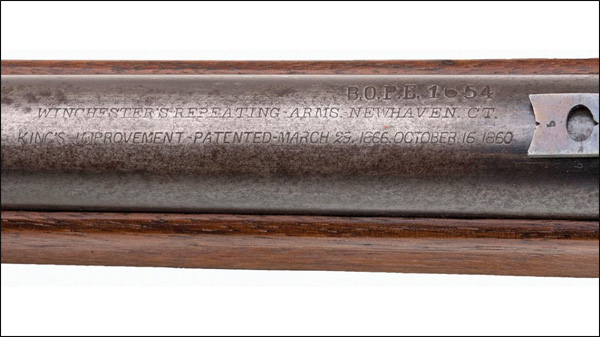
Worldwide Fame
The Winchester 1866 Carbine, as mentioned, changed the landscape of the Wild West in America. The rifle found its way into the hands of both white men and friendly Native American groups. They observed the usefulness of the rifle for self-defense against enemy tribes and hunting for food to feed their families.
Additionally, the success and use of the Winchester were not limited to only the inhabitants of North America. Its popularity reached across the oceans to France and European countries like Switzerland. France purchased nearly 6,000 rifles with 4.5 million rounds of ammunition for use in the Franco-Prussian war. Likewise, the Ottoman Empire also made a significant purchase of 45,000 1866 rifles. These went on to be used in the Russo-Turkish War in 1877.
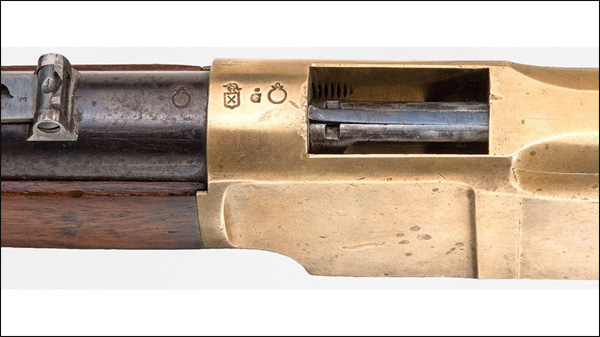
Additionally, the Swiss Army chose to replace their single-shot Milbank-Amsler rifle with the 1866 Carbine. This was due, of course, to its unchallenged performance in the arms field at the time. However, they ended with a domestic model, the Vetterli 1867. Ironically enough, the rifle selected utilized Winchester’s tubular magazine design.
Chain Of Events
The Winchester 1866 Carbine had many great positives throughout its lifespan. However, being used prominently during the Battle of Wounded Knee was not one of them. The horrific events occurred on December 29, 1890, just near Wounded Knee Creek in South Dakota on the Pine Ridge Indian reservation.
7th Calvary Regiment, under Colonel James W. Forsyth, entered the reserve a day earlier and surrounded the encampment. They had plans to disarm the Lakota of their weapons. The Winchester 1866 Carbine was one such weapon involved.
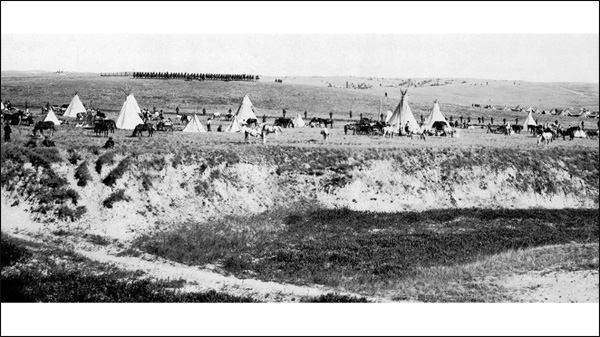 .
.
During that time, the Winchester was at an all-time high in popularity. So much so that some tribes of Native Americans acquired this weapon for its superiority over their primitive weaponry. Unfortunately, relations between Native Americans and the U.S. Government were tense and unpredictable.
Although it is debated what actually started the battle of Wounded Knee, the most accepted belief is that it began with a very small-scale incident and escalated immensely in a very short period of time.
This occurred when the U.S. Calvary was in the midst of disarming the tribe members. At this time, a deaf tribesman named Black Coyote refused to turn over his rifle. By many accounts, it was a Winchester Carbine. Due to possible communication problems between Black Coyote and the troops, or during a minor physical conflict while disarming the Native American, his rifle went off.
This was the catalyst that started it all. The Calvary began shooting at the Native Americans who then returned fire against the troops. They used whatever rifles or pistols they could secure.
The Massacre Ensues
If all was equal during this fire exchange, then this battle would have sunk into obscurity in the history books. However, all was not fair. The Native Americans were outnumbered with many of their guns seized long before the battle even began. Furthermore, the U.S. troops were relentless with their barrage of fire towards the Native Americans. Both women and children were caught in the onslaught.
The “battle” of Wounded Knee became the Massacre at Wounded Knee as a total of nearly 300 Lakota tribe members were killed and nearly 50 wounded. Ironically, the massacre that occurred at Wounded Knee would be the last major armed interaction the United States military had with the Native American people.
The Winchester 1866 Carbine, though not the cause of the conflict, was a major player in the Wounded Knee Massacre. It was used by members on both sides of the conflict with its rapid-repeating fire design causing damage and death for both Native Americans and U.S. Cavalry members.
The weapons were seen lying next to the dead and were collected from the battlefield. Today, those weapons are sought after by collectors. Partly for their innovative design throughout the firearm world of the past. But also because of their impact during such a horrifying incident in U.S. history.
Collector’s Pursuits
The Winchester 1866 Carbine is a collector’s weapon, without a doubt. However, if the weapon was taken from the battlefield of the Wounded Knee Massacre, then its value increases exponentially. But it’s not so easy.
Authenticating battlefield-used Winchester Carbines is a difficult process due to their abundance throughout the West at the time. But beyond the difficulties with research and tracing the background of these sought-after weapons, there is also an ethical boundary. This may or may not be crossed when dealing with true Battle of Wounded Knee-used Winchesters and other artifacts. But that depends upon your particular view of the events of the past.
The notion that one should profit from the events of what can only be called a massacre is unsettling. Specifically, to many within the Lakota community and others on the “outside” viewing the situation objectively.
This is not dissimilar to the devastating sinking of the Titanic on its maiden voyage back in 1912 and the recovery and eventual sale of artifacts from the ocean floor. The moral conflict of profiting from a horrific loss-of-life event is debated even to this day.
Winchester Model 1866 Carbines at Auction
Just a few years back, numerous artifacts from the battle were presented at auction for sale. This included Native American moccasins, a pipe bowl and a wood stem belonging to Chief Red Cloud, photographs of the dead lying across the battlefield, and three rifles.
The rifles were described as “picked up on the battlefield” by a non-Indian woman named Ella Woodard. According to the story, she and her son went to the battlefield after hearing what had occurred. They wanted to see if they could help any of their Indian friends who were still alive.
There, they picked up the three rifles and held them for decades. They were passed down from generation to generation. However, due to both economic and lack of proper storage means, they were presented to the auction site for sale. These three rifles eventually fetched $137,000.
Final Notes
Though speckled with highs and lows throughout its entire lifespan, the Winchester Model 1866 Carbine, without a doubt, altered the landscape of the West. Its lever-action, repeating fire design no longer restricted or slowed the shots of the user. And, when up against one without such a weapon, the Winchester-owned person typically always came out on top.
This particular Winchester rifle made its impact on the arms-producing world more than 150 years ago throughout the country. And its name and reputation continue to impress countless generations of today, and, I’m sure, far into the future. The Winchester Model 1866 lever-action is still in production today.
Find a Winchester 1866 for sale online.
Check out the wide selection of Rifles for sale online at GunsInternational.com.
Article courtesyt of Athlon Outdoors.
For more information, please visit WinchesterGuns.com.
This article was originally published in the Guns of the Old West Spring 2022 issue. Subscription is available in print and digital editions at OutdoorGroupStore.com. Or call 1-800-284-5668, or email subscriptions@athlonmediagroup.com.

This weapon all but defined the era with its innovative, easy-to-use lever-action design and 15-round magazine capacity. The Western Frontier had a new player in town. One that revolutionized the rifle world and essentially became the innovative catalyst that started a long line of lever-action rifles throughout the West.
The Winchester Model 1866 Carbine
It’s without a doubt that this weapon saw a lot of action in its day, from settling disputes at long range to keeping predators away from livestock or taking down enemies with relative ease. The Winchester Carbine became synonymous with dishing out deadly rounds with optimal accuracy and lightning-fast discharge.
However, with this incredible weapon being ubiquitous throughout the West, both the Americans and their rivals, the Native Americans—both friendly factions and those still blood-hungry enemies against the white men—had the Winchester in their possession.
Unfortunately, one such event in our country’s complicated past placed the Winchester 1866 Carbine center stage as the go-to weapon. This was also the scene of one of the most brutal and bloody losses of life recorded in early American History—specifically, the Battle of Wounded Knee.

This battle, or massacre as it’s come to be described, prominently featured the Winchester on both sides of the field. It was a possible misunderstanding that started the violence and an ironic ending that all but saw the end of conflicts between the white men settling the West and Native Americans that opposed their advance.
History Of Production
Prior to the Winchester 1866 Carbine, there were similar lever-action repeating rifles created by several innovative production companies. Walter Hunt from New York patented the premier version under the name “Volition Repeating Rifle.”
This weapon would fire a round—dubbed the Rocket Ball by Hunt—that held gunpowder in its hollow base. However, his rifle was very unreliable and virtually unworkable. Soon after, Hunt’s patent was acquired by Lewis Jennings in 1849.
From Hunt’s initial ideas and design, Jennings created a rifle that offered better performance but with the same complicated mechanics as Hunt’s original rifle designs. Jenning’s version saw limited production until 1852.
In 1855, two men, Horace Smith and Daniel Wesson, formed the Volcanic Repeating Arms Company. With Jenning’s patent, the two entrepreneurs made several improvements to Jenning’s original design and created the Volcanic lever-action rifle. The largest stockholder of this newly formed company was a man named Oliver Winchester.
With a mixture of both success from their developments with ammunition and some not-so-satisfactory results from their Volcanic rifle, Smith and Wesson left the company to create their own business, the Smith & Wesson Revolver Company.
Just about a year after the two men’s departure, the Volcanic Repeating Arms Company moved locations and soon became insolvent. Winchester moved in to essentially pick up the pieces of the battered business. After purchasing the bankrupt business’s assets from his fellow investors in 1857, he reorganized the company into the New Haven Arms Company.
Perfecting the .44 Cartridge
Still with the company through all of its changes and reorganizations, Benjamin Henry worked with designs and innovative cartridge concepts created by Horace Smith to perfect a powerful .44 cartridge, coined the Henry cartridge. This, along with the redesign of the rifle to use this new ammunition, led to the Henry rifle.
It was used by a considerable number of Union soldiers during the Civil War. The Confederates, obviously overwhelmed by its rapid repeat action and large ammunition capacity, called the Henry rifle “that damned Yankee rifle that they load on Sunday and shoot all week!”
Once the Civil War ended, Winchester renamed his company to the Winchester Repeating Arms Company. He improved on the Henry rifle with enhancements to its magazine and wooden forearm frame. However, he retained its .44 Henry cartridge. Thus, the Winchester Model 1866 Carbine was born. And it went on to become the rifle of choice for the expansion and development of the West.

Worldwide Fame
The Winchester 1866 Carbine, as mentioned, changed the landscape of the Wild West in America. The rifle found its way into the hands of both white men and friendly Native American groups. They observed the usefulness of the rifle for self-defense against enemy tribes and hunting for food to feed their families.
Additionally, the success and use of the Winchester were not limited to only the inhabitants of North America. Its popularity reached across the oceans to France and European countries like Switzerland. France purchased nearly 6,000 rifles with 4.5 million rounds of ammunition for use in the Franco-Prussian war. Likewise, the Ottoman Empire also made a significant purchase of 45,000 1866 rifles. These went on to be used in the Russo-Turkish War in 1877.

Additionally, the Swiss Army chose to replace their single-shot Milbank-Amsler rifle with the 1866 Carbine. This was due, of course, to its unchallenged performance in the arms field at the time. However, they ended with a domestic model, the Vetterli 1867. Ironically enough, the rifle selected utilized Winchester’s tubular magazine design.
Chain Of Events
The Winchester 1866 Carbine had many great positives throughout its lifespan. However, being used prominently during the Battle of Wounded Knee was not one of them. The horrific events occurred on December 29, 1890, just near Wounded Knee Creek in South Dakota on the Pine Ridge Indian reservation.
7th Calvary Regiment, under Colonel James W. Forsyth, entered the reserve a day earlier and surrounded the encampment. They had plans to disarm the Lakota of their weapons. The Winchester 1866 Carbine was one such weapon involved.
 .
.During that time, the Winchester was at an all-time high in popularity. So much so that some tribes of Native Americans acquired this weapon for its superiority over their primitive weaponry. Unfortunately, relations between Native Americans and the U.S. Government were tense and unpredictable.
Although it is debated what actually started the battle of Wounded Knee, the most accepted belief is that it began with a very small-scale incident and escalated immensely in a very short period of time.
This occurred when the U.S. Calvary was in the midst of disarming the tribe members. At this time, a deaf tribesman named Black Coyote refused to turn over his rifle. By many accounts, it was a Winchester Carbine. Due to possible communication problems between Black Coyote and the troops, or during a minor physical conflict while disarming the Native American, his rifle went off.
This was the catalyst that started it all. The Calvary began shooting at the Native Americans who then returned fire against the troops. They used whatever rifles or pistols they could secure.
The Massacre Ensues
If all was equal during this fire exchange, then this battle would have sunk into obscurity in the history books. However, all was not fair. The Native Americans were outnumbered with many of their guns seized long before the battle even began. Furthermore, the U.S. troops were relentless with their barrage of fire towards the Native Americans. Both women and children were caught in the onslaught.
The “battle” of Wounded Knee became the Massacre at Wounded Knee as a total of nearly 300 Lakota tribe members were killed and nearly 50 wounded. Ironically, the massacre that occurred at Wounded Knee would be the last major armed interaction the United States military had with the Native American people.
The Winchester 1866 Carbine, though not the cause of the conflict, was a major player in the Wounded Knee Massacre. It was used by members on both sides of the conflict with its rapid-repeating fire design causing damage and death for both Native Americans and U.S. Cavalry members.
The weapons were seen lying next to the dead and were collected from the battlefield. Today, those weapons are sought after by collectors. Partly for their innovative design throughout the firearm world of the past. But also because of their impact during such a horrifying incident in U.S. history.
Collector’s Pursuits
The Winchester 1866 Carbine is a collector’s weapon, without a doubt. However, if the weapon was taken from the battlefield of the Wounded Knee Massacre, then its value increases exponentially. But it’s not so easy.
Authenticating battlefield-used Winchester Carbines is a difficult process due to their abundance throughout the West at the time. But beyond the difficulties with research and tracing the background of these sought-after weapons, there is also an ethical boundary. This may or may not be crossed when dealing with true Battle of Wounded Knee-used Winchesters and other artifacts. But that depends upon your particular view of the events of the past.
The notion that one should profit from the events of what can only be called a massacre is unsettling. Specifically, to many within the Lakota community and others on the “outside” viewing the situation objectively.
This is not dissimilar to the devastating sinking of the Titanic on its maiden voyage back in 1912 and the recovery and eventual sale of artifacts from the ocean floor. The moral conflict of profiting from a horrific loss-of-life event is debated even to this day.
Winchester Model 1866 Carbines at Auction
Just a few years back, numerous artifacts from the battle were presented at auction for sale. This included Native American moccasins, a pipe bowl and a wood stem belonging to Chief Red Cloud, photographs of the dead lying across the battlefield, and three rifles.
The rifles were described as “picked up on the battlefield” by a non-Indian woman named Ella Woodard. According to the story, she and her son went to the battlefield after hearing what had occurred. They wanted to see if they could help any of their Indian friends who were still alive.
There, they picked up the three rifles and held them for decades. They were passed down from generation to generation. However, due to both economic and lack of proper storage means, they were presented to the auction site for sale. These three rifles eventually fetched $137,000.
Final Notes
Though speckled with highs and lows throughout its entire lifespan, the Winchester Model 1866 Carbine, without a doubt, altered the landscape of the West. Its lever-action, repeating fire design no longer restricted or slowed the shots of the user. And, when up against one without such a weapon, the Winchester-owned person typically always came out on top.
This particular Winchester rifle made its impact on the arms-producing world more than 150 years ago throughout the country. And its name and reputation continue to impress countless generations of today, and, I’m sure, far into the future. The Winchester Model 1866 lever-action is still in production today.
Find a Winchester 1866 for sale online.
Check out the wide selection of Rifles for sale online at GunsInternational.com.
Article courtesyt of Athlon Outdoors.
For more information, please visit WinchesterGuns.com.
This article was originally published in the Guns of the Old West Spring 2022 issue. Subscription is available in print and digital editions at OutdoorGroupStore.com. Or call 1-800-284-5668, or email subscriptions@athlonmediagroup.com.







